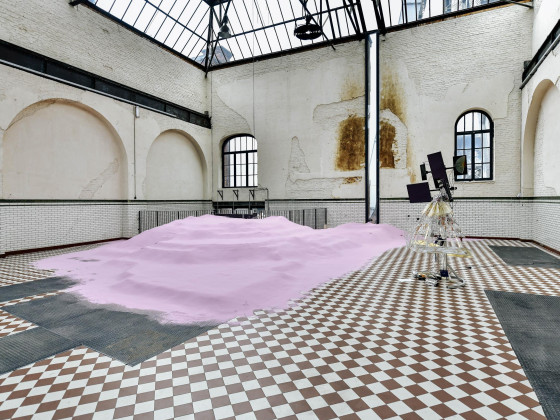submission guidelines
- Please submit proposal of no more than 500 words, along with a brief biography within a 300-word limit, by the submission deadline on Friday, 16 February 2024.
- Proposals can adopt various formats such as an essay, a performance-lecture, or a visual essay. Send your submissions to laura.herman@hogent.be
- Accepted participants will be notified by mid-March 2024.
- Final submission deadlines will be communicated through email.
- Final contributions will be utilised for publication at a later stage.
Theme of the conference
The convergence of feminism and curating has a rich history, rooted in the early days of the feminist art movement in the late sixties in the United States and the United Kingdom (the dominant locations for the movement's early development). In 1971, the art historian and curator Linda Nochlin published Why Have There Been No Great Women Artists?, in which she linked the imbalance between male and female artists to the organization of education and institutional structures. A year later, in 1972, artists Judy Chicago and Miriam Shapiro organised the first feminist exhibition, WomanHouse, as part of the Fresno Feminist Art Program, a new programme that provided a response to the lack of representation of female artists in exhibitions, art collections, and education.
Over time, the focus evolved towards curating from various feminist point of views: building and deconstructing archives and narratives, creating new interpretative frameworks, and identifying structural inequalities within the art world. In recent years, curating has increasingly focused on exploring evolving notions of citizenship, politics, and public participation, particularly in the context of social justice and activism. This shift was informed by a wide range of feminist viewpoints, including black feminism, decolonial feminism, ecofeminism, hydrofeminism, crip feminism, and transfeminism. These theories have introduced crucial tools and concepts like care, intersectionality, situatedness, offering a critical examination of power dynamics and revealing the intertwined layers of domination and marginalisation.
Today, intersectional feminist thought and action bring forward notions of equality, freedom, and care, transcending gender boundaries, and this ethos is reflected in the art field as well. While new developments in the arts quickly influence curatorial practice, they do not always permeate education and its methodologies at the same pace. How can intersectional feminist strategies and perspectives be integrated into curatorial pedagogy, aligning with the evolving curatorial and cultural landscape? This might involve revaluating traditional educational barriers through a feminist lens, establishing an educational environment that embraces marginalized perspectives, where participants actively contribute to the programme's content, and where power imbalances in knowledge creation are critically examined. There may also be a preference for ‘teaching’ affective, experiential, transdisciplinary approaches to curation over representative forms. Finally, it is worth considering the interplay among education, parenthood, reproductive labour, and childcare. As bell hooks advocates in Teaching Community: A Pedagogy of Hope, a more direct confrontation with reality can be a starting point for curatorial education, moving beyond mere ‘exercises’ or speculative questioning and delving into real situations that illuminate the complexities of the world.
The conference will consist of panel presentations, keynote speakers, and open discussions around the question of How can intersectional feminist curating inform pedagogical strategies within curatorial education? What approaches can be employed to teach concepts of care, situatedness, collective action, and responsibility in curatorial practice?We also invite submissions addressing the current landscape of intersectional feminist art criticism and writing. The focus is not solely on the representation of female artists or critiquing the art world and art history as disciplines, but predominantly on the practice of feminist writing as wor(l)d-building.
